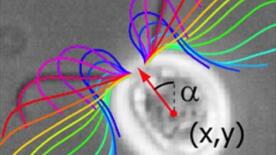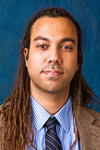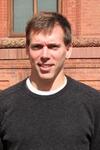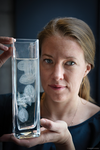Yale’s Integrated Graduate Program in Physical and Engineering Biology (PEB for short) was established to train a new generation of scientists who are skilled at applying physical and engineering approaches to biological research, and who are also sufficiently sophisticated in their biological training that they can readily identify and tackle cutting-edge problems in the life sciences. The PEB leadership is committed to a new paradigm that transcends traditional, artificial, boundaries both between disciplines and also between research, teaching, and learning.
Physics PEB students benefit from
- Frequent interdisciplinary interactions. Being part of PEB means that you will meet and interact with graduate students, postdocs and faculty affiliated with many different departments, and spread across the Science Hill area, the Yale School of Medicine, West Campus, and the School of Engineering and Applied Science.
- Courses co-taught by faculty from biology, engineering and physics PEB courses are taught by pairs of faculty with complimentary expertise, many of whom also collaborate.
- Working with peers from a different background than yours. Several PEB courses incorporate peer teaching, helping physicists learn biology and how to communicate effectively with other disciplines.
- PEB Discussion Group is a monthly seminar, focusing on research-in-progress talks. Two PEB students with complimentary backgrounds organize the talks. Click here for more info.
- Outreach opportunities. PEB students participate in outreach activities including devising and implementing science modules for Breakthough New Haven, a program that prepares middle school students from disadvantaged backgrounds for high school; working with 4-7th grade summer campers; and participating in activities planned by the Yale Science Diplomats.
- Professional development activities include a PEB Career Series and participation in a “Short Course on Communicating Science to the Public” led by the former chief science and health correspondent of NBC News, Bob Bazell.
- Physics of Living Systems Student Research Network (PoLS SRN) serves to connect physics students, working at the physics-biology interface, from institutions across the world. All first-year PEB students attend the annual meeting of the PoLS SRN, held at one of the institutions in the network, and present. More senior students give oral or poster presentations on their research. The PoLS SRN also funds short research exchanges.
- Physics PEB students receive a Physics Ph.D. and also a Certificate of Completion from the program.
For further information see, Physical Engineering and Biology (PEB)
Experiments
- How cells process information and make decisions
- Laboratory of Living Matter
- Mechanics of the cytoskeleton with a particular emphasis on microtubules and microtubule-based motor proteins
- Soft Condensed Matter and Biological Physics
- Soft Matter Research
- Understanding how networks of neurons work together to perform computations










